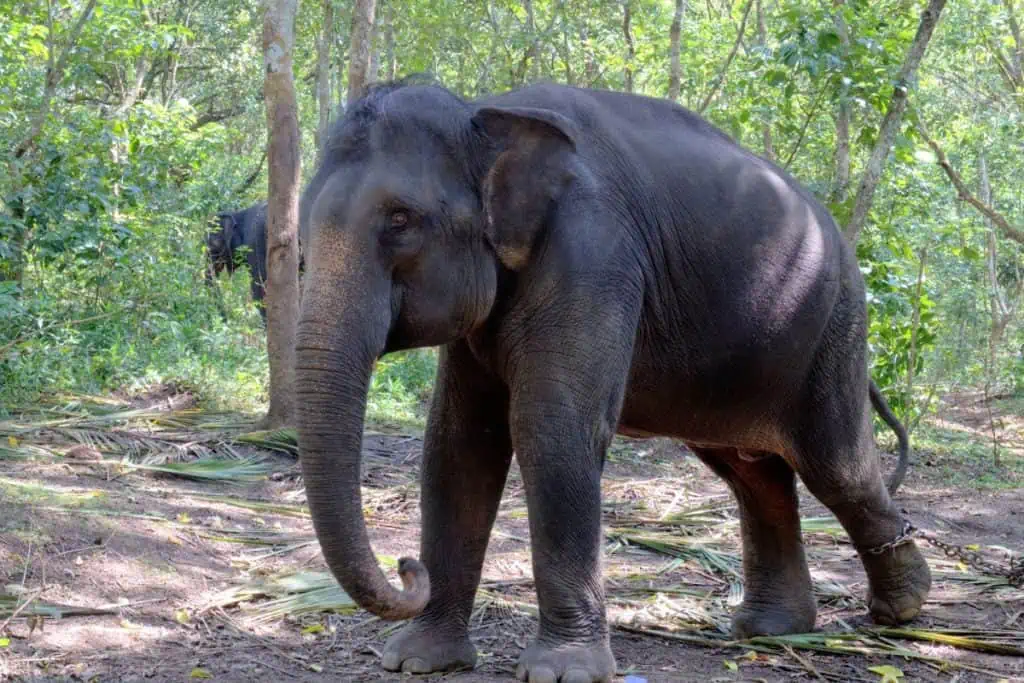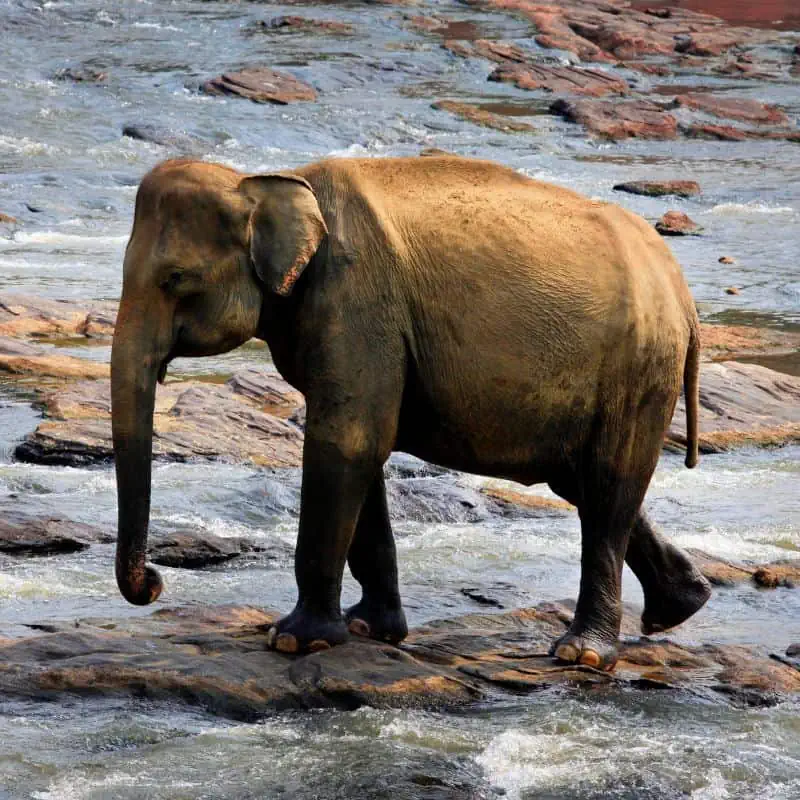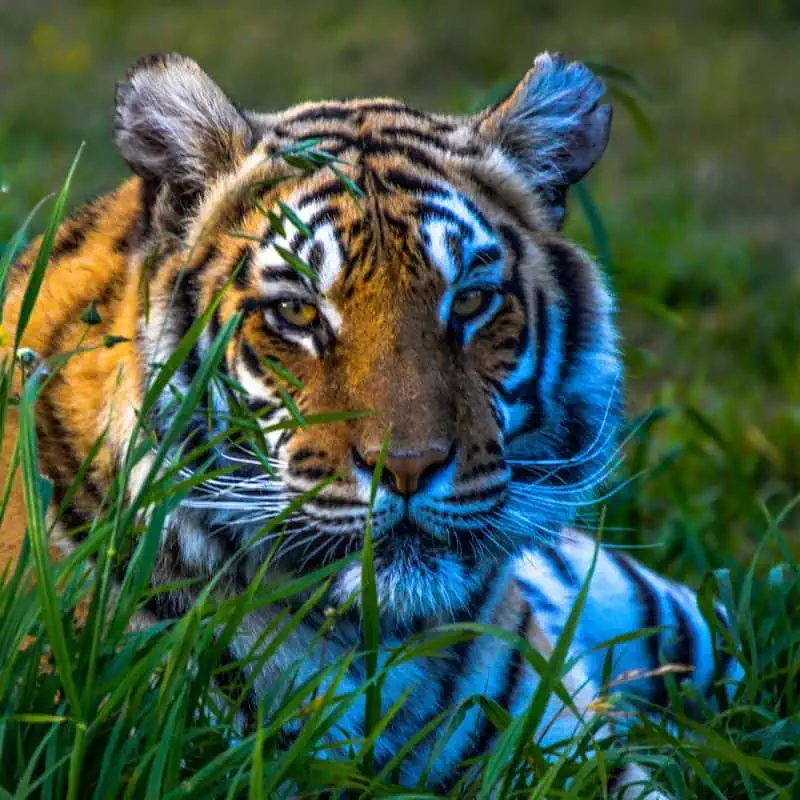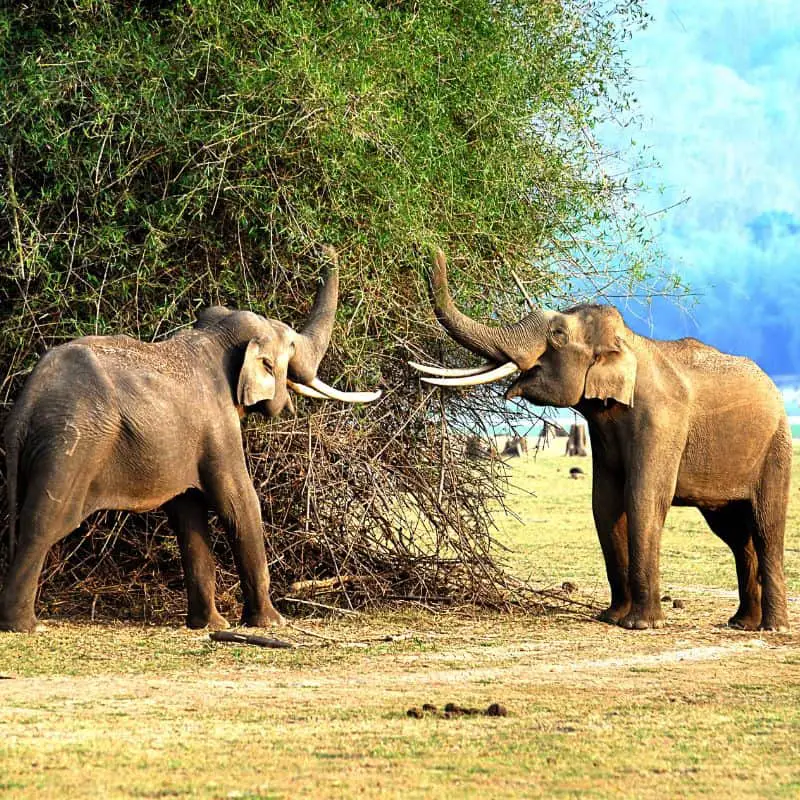The Indian elephant is a subspecies of Asian Elephants. These grayish-black animals are amiable, expressive, and intelligent, but what sets them apart from other elephant species?
Indian Elephants are scientifically called Elephas maximus indicus. This species is one of the three subspecies of Asian elephants and is native to mainland Asia. These elephants are smaller than African elephants. They have larger skulls and smaller ears. Adults weigh between 6,000 to 8,000 pounds and are 18 to 21 feet long.
Keep reading if you want to know more about these fascinating creatures. Without further ado, let’s dive in.

- Fascinating Facts About Indian Elephants
- 1. Indian Elephants Are Fairly Large
- 2. Their Scientific Name Is Elephas Maximus Indicus
- 3. Indian Elephants Are Nocturnal and Diurnal
- 4. They Live in Herds
- 5. They’re Mostly Found in South Asia
- 6. Bengal Tigers Are a Threat to Them
- 7. Indian Elephants Are An Endangered Species
- 8. Their Mating System Is Polygynous
- 9. They Spend Around 19 Hours Eating
- 10. Indian Elephants Are Important to Indian Customs
- FAQS
Fascinating Facts About Indian Elephants
Indian elephants have numerous features that are unique to their species alone.
Here are some interesting facts related to the Indian elephant.
1. Indian Elephants Are Fairly Large
These species, though enormous, are smaller than African Savanna Elephants and African Forest Elephants. Adult Indian elephants weigh somewhere between 6,000 to 8,000 pounds and are 18 to 21 feet long. This length covers their trunk, head, and body.
The head is the highest part of the elephant’s body. The babies of Indian elephants are also relatively large and can measure around a hundred pounds.
Indian elephants have large heads, small necks, and long tails. Their gray tails go beyond their knees, and the coarse hair on the tail touches the ground.
2. Their Scientific Name Is Elephas Maximus Indicus
Elephas Maximus Indicus is the scientific name for Indian elephants. They belong to the Mammalia class in the Animalia Kingdom.
Indian elephants are a part of the Elephantidae family, and the subspecies is E.m Indicus. Proboscideans is the order of these elephant species.
The word Elephas comes from Greek with a bit of influence from Latin. Indicus comes from the Ancient Greek root word meaning India. In simple terms, Elephas Maximus means a massive elephant from India.

3. Indian Elephants Are Nocturnal and Diurnal
Indian elephants are known to be diurnal. That means that these giant animals are very active during the day and sleep during the night.
Yet, on the contrary, the nocturnal nature of these elephants allows them to be pretty active at night as well.
4. They Live in Herds
Indian elephants are very social animals and live in matriarchal units. These stable herds and groups consist of 20 or more related females.
The oldest female leads the group and guides its herd to water and food sources. Occasionally, these matriarchal groups temporarily divide into smaller groups.
Males also sometimes join these groups.
As social animals, Indian elephants communicate with one another through high and low-frequency sounds, which can also be heard from afar.
These elephants are very social and intelligent. They also express various emotions like grief and joy through their sounds.
5. They’re Mostly Found in South Asia
Indian elephants are native to Mainland Asia and live in these surrounding areas. Over half of the Indian elephant population thrive in the southern part of Asia.
31,368 Indian elephants are known to be present in India alone. Second in line is Myanmar, which has 4,000 to 5,000 of this elephant species spread throughout the area.
Around a thousand are found in Thailand and Malaysia, with only hundreds in areas like Bhutan, Bangladesh, Cambodia, China, and Laos.
In Southern Vietnam, Indian elephants are as few as 70. These areas of South Asia have a plentiful supply of plants to feed these elephants.
6. Bengal Tigers Are a Threat to Them
Thanks to their massive weight and size, Indian elephants have only a few predators in the wild. In areas where Indian elephants thrive, Bengal tigers are known to be a significant threat.
While they do eat Indian elephants, these tigers usually attack only babies as they are easier to hunt down. There have been tiger attack incidents reported in Uttarakhand, India.

7. Indian Elephants Are An Endangered Species
Due to the threats from deforestation, human conflicts, and poaching, Indian elephants are listed as an endangered species on the IUCN Red List.
Since the 1950s, the number of Indian elephants has reduced by almost 50%, making them come on this list.
As per the latest update in 2019 by IUCN, the current numbers need to be checked to see how many Indian elephants remain.
8. Their Mating System Is Polygynous
Indian elephants follow a polygynous mating system. They breed throughout the year, but males often fight aggressively before mating.
That sometimes results in injuries and death. Winners take the female group and push the other males away.
The breeding elephant pair stays together for almost three weeks.
After a 22-month gestation period, the female Indian elephant gives birth to one baby. The female herd protects the young.
9. They Spend Around 19 Hours Eating
The surprising thing about Indian elephants is that they eat around 19 hours daily.
As a result, they produce large amounts of waste, as much as 220 pounds per day, as they walk around the area.
These elephants walk up to around 125 miles to stay active and search for the next food source. As they travel this distance while eating, they disperse germinating seeds.

10. Indian Elephants Are Important to Indian Customs
These massive animals are seen as a prosperity symbol in parts of Southeast Asia. Especially in Indian culture.
Some people in India worship Indian elephants because they resemble Lord Ganesha with their swinging boneless trunks.
In the history of Indian culture, Indian elephants were pets and chariots of ancient rulers.
FAQS
What Do Indian Elephants Eat?
Indian Elephants are herbivores, so they usually feed on roots, leaves, tree barks, shoots, stems, and grass. They also consume rice, sugarcane, and bananas.
How Are Indian Elephants Different From African Elephants?
Indian elephants are visibly different from African elephants. Indian Elephants have smaller ears and are generally smaller than African ones.
How Long Do Indian Elephants Live?
Indian elephants have a lifespan of as much as 70 years in the wild. However, the average life expectancy decreases when these elephants are kept in captivity.

